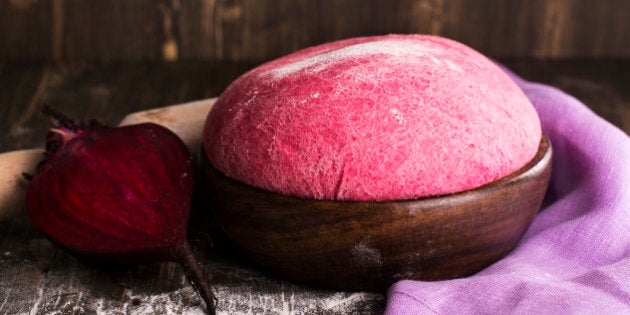
Remember that rumour about red food colouring being made of crushed bugs? Well it's true. Using bugs as red food dye has been around for centuries.
Other food colours are made from synthetic or chemical agents. Depending on the types of food being coloured affects the substances used to make the colour.
To keep things simple, lets stick to colouring icings and frostings.
Frosting is a thick and fluffy cream that can hold its shape.
Icing is a thin, liquidity glaze.
So much of what we eat is done with our eyes first. We want our food to look like the flavours that best represent them, hence why any processed strawberry or cherry candy is red and lemon flavoured instant pudding is yellow.
With so many naturally beautiful coloured foods available to us, it's not difficult to create our own food colouring without powdering bugs.
Are you suddenly reflecting on all those red coloured sweet treats that you recently overindulged in on Valentine's Day? Yeah, you are.
To create DIY natural food coloring for frostings and icings, it involves the just add water method. Foods that are naturally intense in colour that leave stains on your fingers when handling them are best.
Think back to your kindergarten days, where we were introduced to primary colours; red, yellow and blue, and how combining these three colours make all the other ones.
Fruit/Veggie + Water = Homemade Natural Food Coloring
Red
- Beets
Boil beets in enough water to cover them, boil until only a concentrated red juice remains.
Yellow
- ½ tbsp. ground turmeric
Boil 1/4 cup of water and turmeric for 3-5 minutes.
Blue
- Half of a red cabbage head (yes, red cabbage)
- Baking soda
Boil the shredded cabbage in enough water to cover it for 10-ish minutes. Take it off the heat and let it sit for five then drain. The colour will be purple. When the colour cools down add ½ tsp. of baking soda, at a time, until the colour becomes the desired shade of blue you're looking for.
Once you have these primary colours made, go nuts by creating endless colours with various intensities.

Image courtesy of brandigirlblog.com
Homemade food colouring can be created in a number of ways. If you're able to get a hold of natural powders, such as carrot, spinach, matcha, paprika and others, use them. Powders are easier to work with since water isn't required and the colours are bright and bold to begin with.
Another option which is a bit more tedious, but super effective is dehydrating fruits and vegetables in an oven (or preferably a dehydrator), and then grinding them in a high powered blender to create a powder.
Natural food colouring is made of fruits and veggies, which means it's gluten free, dairy free and vegan. Plus it's tasteless if you're using small quantities. Of course it won't have an impressive shelf life like its artificial equivalent would, but you wouldn't want it to since you're using real food to create the dyes. It would just be wrong if the natural stuff lasted as long as McDonald's fries.
Follow HuffPost Canada Blogs on Facebook
